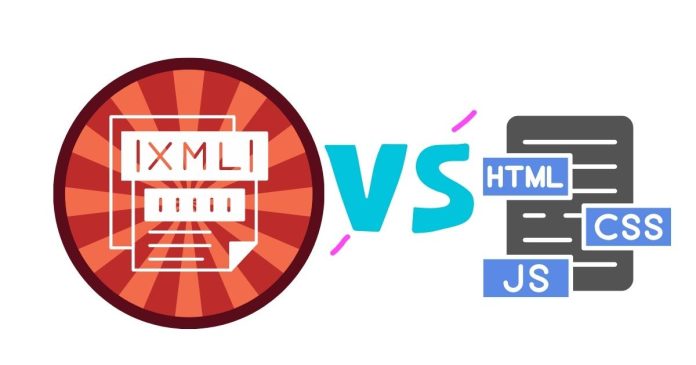HTML (HyperText Markup Language) and XML (eXtensible Markup Language) are both markup languages, but they serve different purposes and have distinct features:
1. Purpose:
- HTML is used for creating and displaying web pages and their content. It structures the content (like text, images, videos) and defines the layout using tags such as
<div>,<h1>,<p>, etc. - XML is used for storing and transporting data. It doesn’t display data directly but focuses on structuring the data in a way that both humans and machines can read. It’s used to describe data and its relationships using custom tags.
2. Flexibility:
- HTML has a fixed set of predefined tags (like
<html>,<head>,<body>,<table>, etc.). You cannot create new tags. - XML is highly flexible because you can create your own custom tags, tailored to your specific needs, like
<book>,<author>,<price>, etc.
3. Syntax:
- HTML allows certain tags to be optional, like closing tags in some cases (e.g.,
<li>,<p>, etc.), and the structure is more lenient. - XML is strict about syntax: all tags must be properly closed, tags must be nested correctly, and case sensitivity matters (e.g.,
<Book>is different from<book>).
4. Use Cases:
- HTML is primarily used for web page content and presentation.
- XML is used for data storage and transport (e.g., for configuration files, data exchange between systems, or databases).
5. Rendering:
- HTML content is rendered and displayed by browsers directly as web pages.
- XML content is not rendered by browsers. It is typically used in combination with other technologies like XSLT (Extensible Stylesheet Language Transformations) to transform it into HTML for display.
6. Validation:
- HTML is loosely validated; browsers often try to display content even if the HTML is not perfect.
- XML requires validation (either via DTD or XSD) to ensure that the document structure is correct and well-formed.
7. Example:
HTML:
<!DOCTYPE html>
<html>
<head>
<title>My Page</title>
</head>
<body>
<h1>Welcome to my page</h1>
<p>This is a paragraph.</p>
</body>
</html>
XML:
<book>
<title>XML for Beginners</title>
<author>John Doe</author>
<price>29.99</price>
</book>
Summary:
- HTML is for displaying content on the web, focusing on presentation.
- XML is for defining, storing, and transporting data, and it’s much more flexible with structure but doesn’t display content directly.


